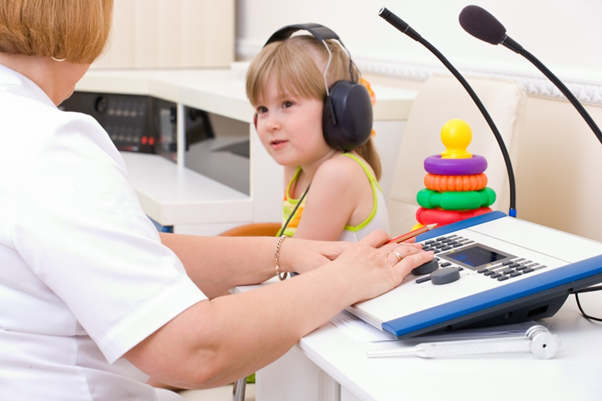How to Identify Hearing Loss in Children
If you’re concerned that your child is suffering from hearing loss, there are a number of signs you should look out for. When your child isn’t old enough to talk yet, they have no way of telling you they can’t hear. Even if your child is able to communicate clearly, hearing loss can often occur gradually, so they may not even realise their hearing has become a problem. Fortunately, there are different things you can lookfor to help determine if a hearing test for children is required.
Before listingsome of these signs, it’s important to learn about the two different forms of hearing loss in children:
- Congenital Hearing Loss: If your child has congenital hearing loss, it means they were predisposed to hearing loss through a genetic condition. This form of hearing loss may have been caused by an infection, birth complication, nervous system or brain disorder, or a family history of hearing loss.
- Acquired Hearing Loss: Acquired hearing loss is hearing loss that’s acquired for some reason after a child is born. Acquired hearing loss can be brought on by untreated middle ear infections, excessive noise, the eardrum being perforated, or head injuries.
The Signs of Hearing Loss in Infants
It’s likely that the hospital or your paediatrician performed a hearing test for your infant shortly after they were born. However, it’s possible for their hearing to change in the months after their birth. Below are some milestones an infant with normal hearing should be achieving. If you don’t notice your baby meeting these milestones, it might be an indication that you should seek a doctor’s opinion:
- Up to 4 months: At this age, infants should be demonstrating their startle reflex in response to loud sounds, respond to their parents’ voices, and wake up when the environment is noisy.
- 4 to 9 months: Babies who are in this age range typically smile when someone talks to them, babble, enjoy playing with toys that make sounds, and turn their head towards noises or voices.
- 9 to 15 months: When babies are between 9 and 15 months, they should be responding to their name, making lots of different sounds when they babble, and showing that they understand basic requests.
- 15 to 24 months: During this time frame, babies should be able to say multiple words, point to named objects (body parts, animals, etc.), and follow a simple set of directions.
Signs of Hearing Loss in Older Children
If you notice any of the following signs in your pre-school or school-aged child, a hearing test for children may be required:
- Your child is often inattentive and doesn’t respond to you or follow simple instructions
- They’re having difficulty learning new concepts, either in school or at home
- Your child’s speech is limited or not as developed as other children their age
- When you call your child’s name, they don’t always respond
- You’ve noticed that your child turns the TV volume up
- Your child frequently tells you that their ears are bothering them or causing them pain
- When in a group setting, you notice your child looking for cues from others for what to do rather than following the directions of the speaker


Comments are closed.